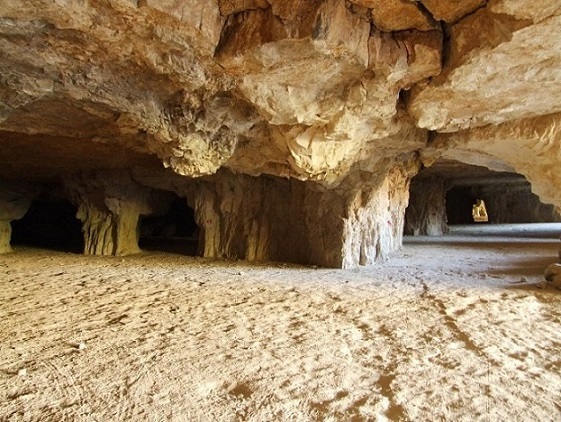Jahrom
Jahrom is one of the cities of Fars province in southern Iran, located 170 kilometers southeast of Shiraz, the capital of Fars province. Many tropical and subtropical plants are grown in Jahrom including citrus, date, palm and wheat. The name Jahrom can be literally translated as “hot place”, expressing the climate of the area, but etymologically it is interpreted as “green place”. The history of Jahrom dates back to about 2,500 years ago, when the Achaemenids founded the Persian Empire.
Sang Tarashan Cave
Jahrom’s Sang Shekanan Cave, known to locals as ‘Sang Eshkan’, is the largest handcrafted cave in Iran and the Middle East. The Sang Eshkan cave consists of several openings and columns that can be seen in the form of transverse porticoes.
The arches are made by extracting limestone and dolomitic stone. Most of them are tunnel-shaped. It can be said that there is no cave bigger than Sang Tarashan with the same characteristics: arches, columns and openings.
The stones extracted and transported from the cave were used for decoration works, building facades and portals, barred windows, gravestones, stone statuettes and vessels. The portal of the Shah Cheragh Shrine, the Atigh Jomeh Mosque in Shiraz and the Eram Garden are some examples of places where these stones were used.
Remains of the Spice Route
In the city of Jahrom there are remains of a 400-year-old historical road called the Spice Route by the locals. It was built in the Safavid era in Bandar Abbas and passed through the cities of Lar and Jahrom to Isfahan. In the immediate vicinity of this road, near the village of Shah Talkh, there are four water reservoirs and two caravanserais and from there the road becomes mountainous.
In the past, merchants and others brought goods such as textiles and spices from India to Bandar Abbas and from there to other cities, including Isfahan, the historic Safavid capital. Today, only five kilometers of this road in the city of Jahrom remain intact and the remains of historical monuments can be seen along the way.
Chardin, traveled the spice route and in his travel account, mentioned Mount Alborz as the toughest and most dangerous mountain in Iran and a suitable road was the only way to cross this mountain.
If you are passionate about mountains, hiking, nomadism, photography, anthropology, historical landscapes and the fascinating culture of the Middle East, SITO Travel would help you organize your trip to Iran. Contact us because our experience is born and developed in the field.
Fire Temple in Ghadamgah
This is a very ancient monument, located in the south of Jahrom, with many rooms overlooking the entire city of Jahrom and situated on a pleasant hill. The historical context of this monument is still not entirely clear. It seems that the places called Ghadamgah are considered Anahita temples that were dedicated to the worship of women.
Barbod the Musician
At the corner of Ghadamgah is also the tomb of Barbod, the famous Sassanid musician. Barbod was one of the most famous musicians and one of the most relevant composers of the time of Khosrow Parviz, during the reign of the Sassanids. He is credited with inventing specific doctrines and types of Iranian songs, such as the Maghamat. He was one of the greatest singers and one of the masters of music, as well as the mentor and talented performer of the Oud, an instrument of the short-handled lute family.



Comments